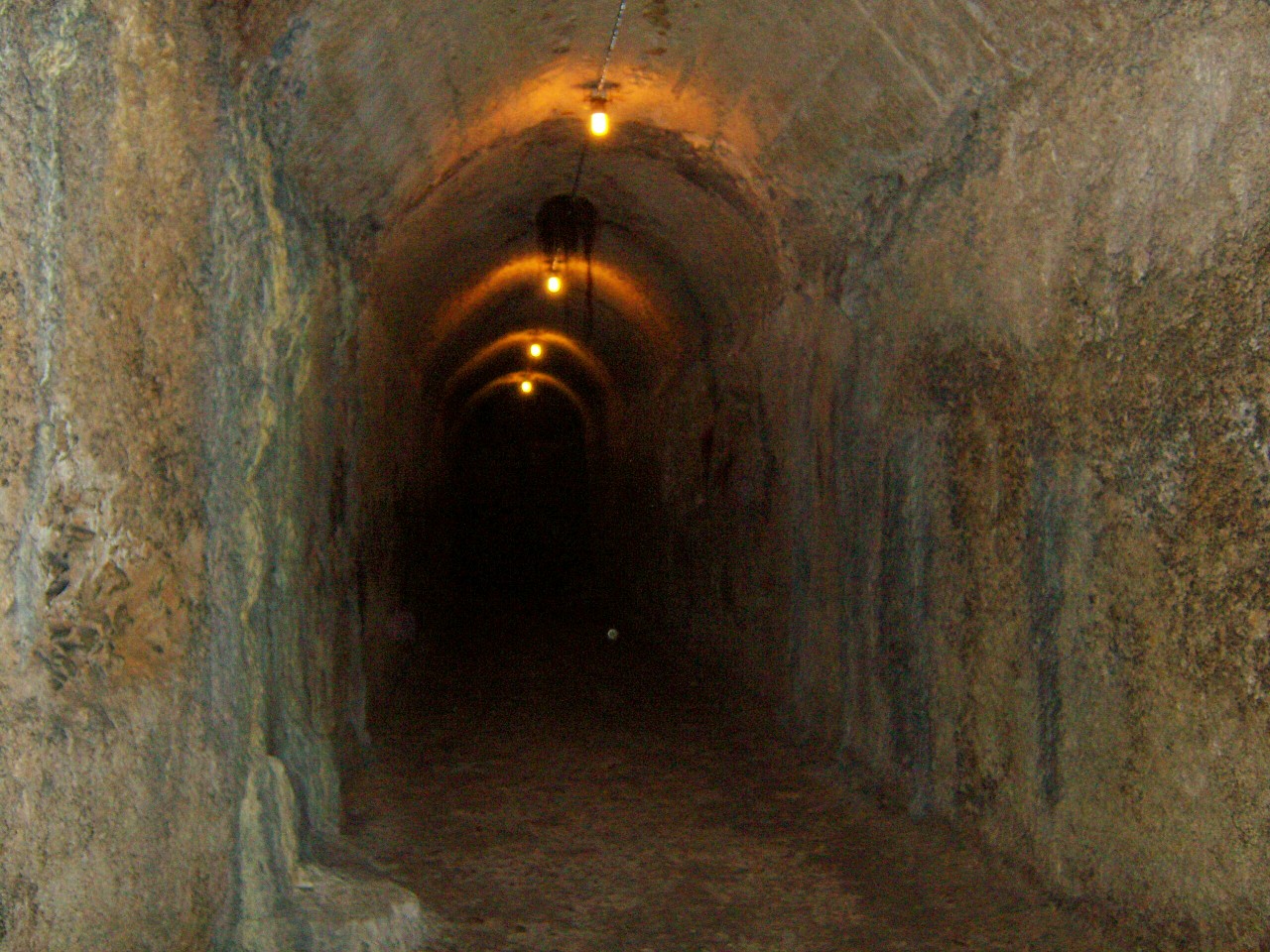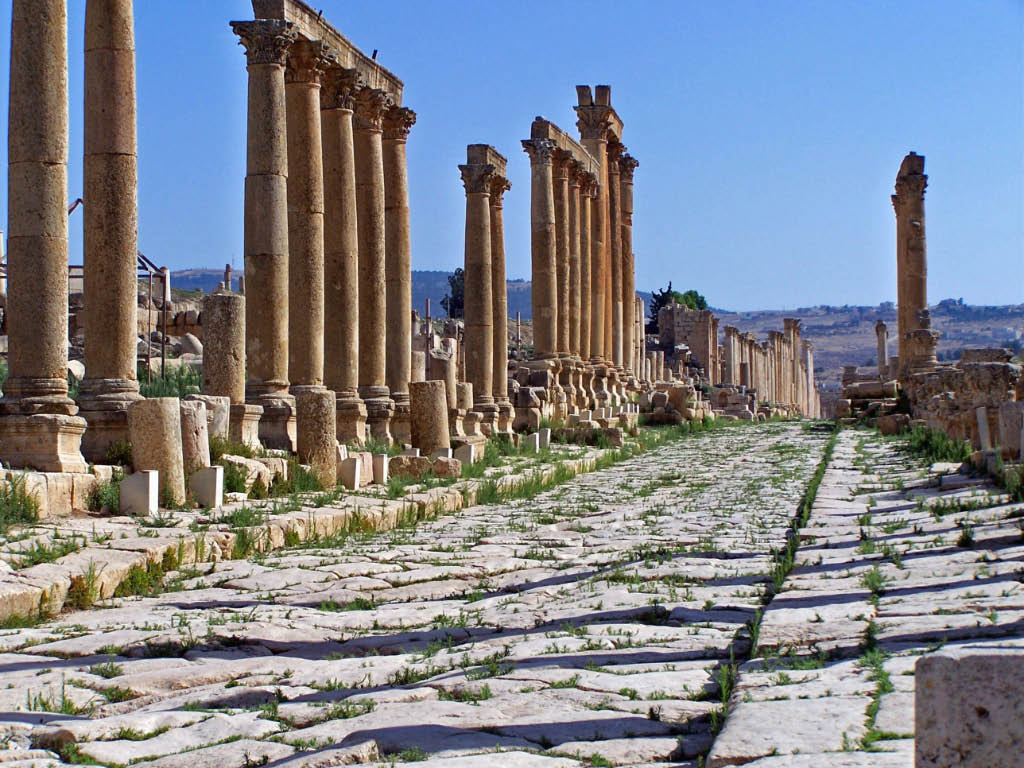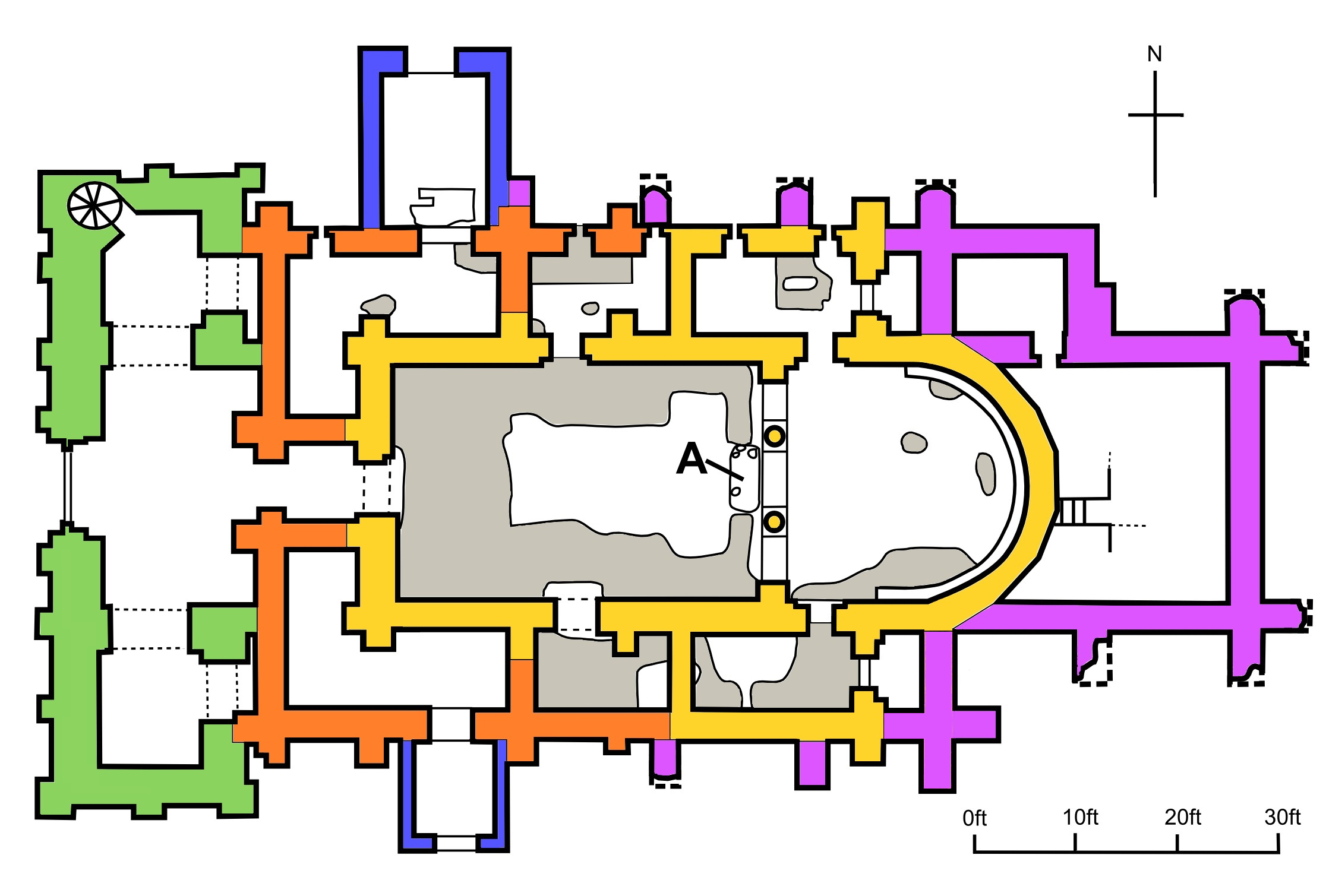|
Archaeological Park Of Urbs Salvia
The Archaeological Park of Urbs Salvia is situated in the ''comune'' of Urbisaglia (Province of Macerata), in the Marches, Italy. It is the largest archaeological park in the region. History The city, located in the V Regio Picenum, was founded as a '' colonia'' during the 2nd century BC. It was the birthplace of some leading figures of the Roman Empire, such as the consul Gaius Fufius Geminus and Lucius Flavius Silva Nonius Bassus. Urbs Salvia was sacked by the Visigoths in 408–10 AD, and suffered destruction over the years from earthquakes and plundering. The decadence of the town is described by the poet Dante Alighieri (1265–1321) in his ''Divine Comedy'' (Paradiso, XVI, 73-78): If Luni thou regard, and Urbisaglia, How they have passed away, and how are passing Chiusi and Senigallia after them, To hear how races waste themselves away Will seem to thee no novel thing nor hard Seeing that even cities have an end. Archaeological Park The Archaeological Park o ... [...More Info...] [...Related Items...] OR: [Wikipedia] [Google] [Baidu] |
Province Of Macerata
The province of Macerata ( it, provincia di Macerata) is a province in the Marche region of Italy. Its capital is the city of Macerata. The province includes 55 comunes (Italian: ''comuni'') in the province, see Comunes of the Province of Macerata. Located between the rivers Potenza (''Flosis'') and Chienti, both of which originate in the province, the city of Macerata is located on a hill. The province contains, among the numerous historical sites, the Roman settlement of Helvia Recina, destroyed by orders of Alaric I, King of the Visigoths, in 408. The province was part of the Papal States from 1445 (with an interruption during the French invasion during the Napoleonic Wars), until the unification of Italy in 1860. The University of Macerata was formed in the province in 1260 and was known as the University of the Piceno from 1540, when Pope Paul III issued a bull naming it this. The town of Camerino, home to another historical university, is also located in the region ... [...More Info...] [...Related Items...] OR: [Wikipedia] [Google] [Baidu] |
Roman Amphitheatre
Roman amphitheatres are theatres – large, circular or oval open-air venues with raised seating – built by the ancient Romans. They were used for events such as gladiator combats, '' venationes'' (animal slayings) and executions. About 230 Roman amphitheatres have been found across the area of the Roman Empire. Early amphitheatres date from the Republican period, though they became more monumental during the Imperial era.Bomgardner, 61. Amphitheatres are distinguished from circuses and hippodromes, which were usually rectangular and built mainly for racing events, and stadia, built for athletics, but several of these terms have at times been used for one and the same venue. The word ''amphitheatrum'' means "theatre all around". Thus, an amphitheatre is distinguished from the traditional semicircular Roman theatres by being circular or oval in shape.Bomgardner, 37. Components The Roman amphitheatre consists of three main parts: the '' cavea'', the arena, and the ''vomito ... [...More Info...] [...Related Items...] OR: [Wikipedia] [Google] [Baidu] |
Cardo
A cardo (plural ''cardines'') was a north–south street in Ancient Roman cities and military camps as an integral component of city planning. The cardo maximus, or most often the ''cardo'', was the main or central north–south-oriented street. Etymology The ''cardo maximus'' was the "hinge" or axis of the city, derived from Greek καρδίᾱ, kardia ("heart") and as such was generally lined with shops and vendors, and served as a hub of economic life. Most Roman cities also had a Decumanus Maximus, an east–west street that served as a secondary main street. Due to varying geography, in some cities the Decumanus is the main street and the Cardo is secondary, but in general the Cardo maximus served as the primary street. The Forum was normally located at, or close to, the intersection of the Decumanus and the Cardo. Examples Apamea, Syria The Cardo Maximus of Apamea, Syria ran through the centre of the city directly from North to South, linked the principal gates of ... [...More Info...] [...Related Items...] OR: [Wikipedia] [Google] [Baidu] |
Roman Roads
Roman roads ( la, viae Romanae ; singular: ; meaning "Roman way") were physical infrastructure vital to the maintenance and development of the Roman state, and were built from about 300 BC through the expansion and consolidation of the Roman Republic and the Roman Empire. They provided efficient means for the overland movement of armies, officials, civilians, inland carriage of official communications, and trade goods. Roman roads were of several kinds, ranging from small local roads to broad, long-distance highways built to connect cities, major towns and military bases. These major roads were often stone-paved and metaled, cambered for drainage, and were flanked by footpaths, bridleways and drainage ditches. They were laid along accurately surveyed courses, and some were cut through hills, or conducted over rivers and ravines on bridgework. Sections could be supported over marshy ground on rafted or piled foundations.Corbishley, Mike: "The Roman World", page 50. Warwick Pres ... [...More Info...] [...Related Items...] OR: [Wikipedia] [Google] [Baidu] |
Tropaion
A tropaion ( el, τρόπαιον, la, tropaeum), from which the English word, "trophy", is derived, was a monument erected to commemorate a victory over one's foes by the ancient Greeks and later, by the Romans. The armour of the defeated foe would be hung upon the monument. Originally, the location of the monument was the battlefield where the commemorated victory took place. Initially, the typical monument was constructed out of a living tree with lateral branches, or it was constructed in the shape of one. After construction, the ''tropaion'' was dedicated to a deity in thanksgiving for the victory. Some images of tropaion show many weapons and shields heaped below the armor hoisted upon the monument. In later times, pairs of lances, banners, or stakes set crosswise might be used instead of the tree format. Greece In the Greek city-states of the Archaic period, a ''tropaion'' would be set up on the battlefield itself, usually at the site of the "turning point" (Gk. ''trop ... [...More Info...] [...Related Items...] OR: [Wikipedia] [Google] [Baidu] |
Ornamental
Ornamental may refer to: *Ornamental grass, a type of grass grown as a decoration * Ornamental iron, mild steel that has been formed into decorative shapes, similar to wrought iron work *Ornamental plant, a plant that is grown for its ornamental qualities *Ornament (architecture), a decorative detail used to embellish parts of a building or interior furnishing *Ornament (art) *Ornament (music), musical flourishes that are not necessary to the overall melodic (or harmonic) line Music *Ornamental, a music group formed as a side project of Strawberry Switchblade vocalist Rose McDowall Rose McDowall (née Porter; born 21 October 1959) is a Scottish musician, forming Strawberry Switchblade with Jill Bryson in 1981. History McDowall was born in Glasgow, Scotland in 1959. Her first venture into music was in the Poems, an art-pun ... See also * Ornament (other) {{disambig ... [...More Info...] [...Related Items...] OR: [Wikipedia] [Google] [Baidu] |
Porticus
A porticus, in church architecture and archaeology, is usually a small room in a church. Commonly, porticus form extensions to the north and south sides of a church, giving the building a cruciform plan. They may function as chapels, rudimentary transepts or burial-places. For example, Anglo-Saxon kings of Kent were buried in the south porticus at St Augustine's Abbey, with the exception of Eadberht II, who was buried in a similar location in St Mary's Church, Reculver. This feature of church design originated in the late Roman period and continued to appear in those built on the European continent and, in Anglo-Saxon England Anglo-Saxon England or Early Medieval England, existing from the 5th to the 11th centuries from the end of Roman Britain until the Norman conquest in 1066, consisted of various Anglo-Saxon kingdoms until 927, when it was united as the Kingdom of ..., until the 8th century. References Footnotes Notes Bibliography * * Archaeological terminology Ar ... [...More Info...] [...Related Items...] OR: [Wikipedia] [Google] [Baidu] |
Augustus
Caesar Augustus (born Gaius Octavius; 23 September 63 BC – 19 August AD 14), also known as Octavian, was the first Roman emperor; he reigned from 27 BC until his death in AD 14. He is known for being the founder of the Roman Principate, which is the first phase of the Roman Empire, and Augustus is considered one of the greatest leaders in human history. The reign of Augustus initiated an imperial cult as well as an era associated with imperial peace, the '' Pax Romana'' or '' Pax Augusta''. The Roman world was largely free from large-scale conflict for more than two centuries despite continuous wars of imperial expansion on the empire's frontiers and the year-long civil war known as the "Year of the Four Emperors" over the imperial succession. Originally named Gaius Octavius, he was born into an old and wealthy equestrian branch of the plebeian ''gens'' Octavia. His maternal great-uncle Julius Caesar was assassinated in 44 BC, and Octavius was named in Cae ... [...More Info...] [...Related Items...] OR: [Wikipedia] [Google] [Baidu] |
Tiberius
Tiberius Julius Caesar Augustus (; 16 November 42 BC – 16 March AD 37) was the second Roman emperor. He reigned from AD 14 until 37, succeeding his stepfather, the first Roman emperor Augustus. Tiberius was born in Rome in 42 BC. His father was the politician Tiberius Claudius Nero and his mother was Livia Drusilla, who would eventually divorce his father, and marry the future-emperor Augustus in 38 BC. Following the untimely deaths of Augustus' two grandsons and adopted heirs, Gaius and Lucius Caesar, Tiberius was designated Augustus' successor. Prior to this, Tiberius had proved himself an able diplomat, and one of the most successful Roman generals: his conquests of Pannonia, Dalmatia, Raetia, and (temporarily) parts of Germania laid the foundations for the empire's northern frontier. Early in his career, Tiberius was happily married to Vipsania, daughter of Augustus' friend, distinguished general and intended heir, Marcus Vipsanius Agrippa. They had a son, Drus ... [...More Info...] [...Related Items...] OR: [Wikipedia] [Google] [Baidu] |
Cardo Maximus
A cardo (plural ''cardines'') was a north–south street in Ancient Roman cities and military camps as an integral component of city planning. The cardo maximus, or most often the ''cardo'', was the main or central north–south-oriented street. Etymology The ''cardo maximus'' was the "hinge" or axis of the city, derived from Greek καρδίᾱ, kardia ("heart") and as such was generally lined with shops and vendors, and served as a hub of economic life. Most Roman cities also had a Decumanus Maximus, an east–west street that served as a secondary main street. Due to varying geography, in some cities the Decumanus is the main street and the Cardo is secondary, but in general the Cardo maximus served as the primary street. The Forum was normally located at, or close to, the intersection of the Decumanus and the Cardo. Examples Apamea, Syria The Cardo Maximus of Apamea, Syria ran through the centre of the city directly from North to South, linked the principal gates of ... [...More Info...] [...Related Items...] OR: [Wikipedia] [Google] [Baidu] |




_lower.jpg)



